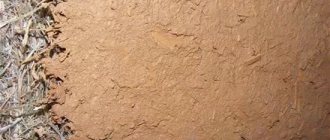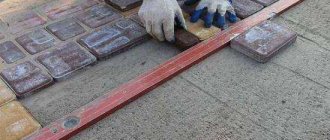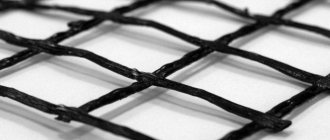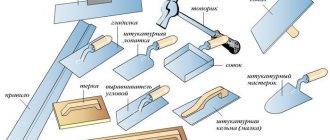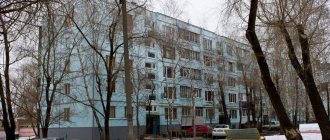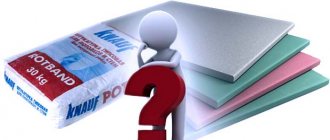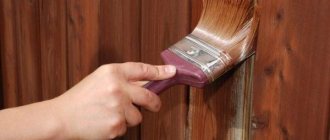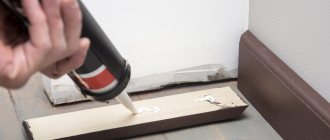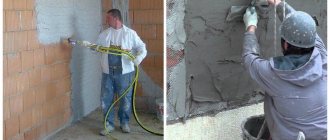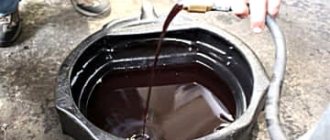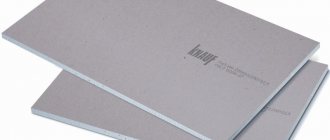Are new materials needed in construction? Despite the traditional choice of building materials and the procedure for carrying out work in the construction of private houses, technologists and engineers continue to look for ways to improve and improve modern homes. The disadvantages of walls made of brick and concrete are known to everyone who lives in apartments built from them, and first of all, this is low sound insulation and huge heat losses. Of course, this can be corrected, but such work will lead to additional costs for insulating the walls and giving them acceptable soundproofing properties.
Properties and advantages of wood concrete
Having considered this problem, experts came to the conclusion that the best solution to such shortcomings would be to use other materials for the construction of walls. And such material was invented back in the distant 50s of the twentieth century. It consists of crushed wood chips used as a base and a cement mixture, which serves as a fastening agent. The material was given the name Arbolit. Depending on the proportions of the components, blocks made from it acquire strength comparable to foam concrete or shell rocks, but at the same time have a number of advantages. If mineral reinforcing components were also used in manufacturing, the material acquires additional resistance to destruction.
- Firstly, due to the high content of wood in the blocks, houses built from wood concrete are distinguished by excellent sound insulation. Moreover, the walls acquire this property even without finishing. When the house is plastered and interior finishing work is done, the soundproofing properties increase further.
- Secondly, the wood contained in the walls perfectly retains heat inside the house and prevents the penetration of cold from outside. With a wall made of wood concrete having a thickness of 30 cm, the thermal protection is comparable to walls made of brick and having a thickness of at least one meter.
Basic principles of construction
Foundation
When building a bathhouse from wood concrete with your own hands, sometimes the base is made of an insulated slab equipped with stiffeners. The recommended thickness of such a slab is 3 cm. It is also necessary to provide insulation for the blind area. To prevent the foundation from getting wet, all liquid is drained from it through a drainage pipe. Both the features of the blind area and the use of the drainage system are taken into account when digging a pit.
Walls
The usual step-by-step instructions for building wood concrete baths often ignore the fact that they are built in the spring. More precisely, the professionals who compose such instructions forget this most obvious fact to them. If necessary, the blocks can be cut into the required parts using a circular saw. It is supplemented with a 33 cm disc. The openings must be strengthened.
Installation of windows and doors
For a bathhouse, it is recommended to choose wooden windows and doors. The thickness of the structure should be such that the dew point is inside the glass unit. If the required thickness exceeds 22 cm, you have to either increase the thermal protection or use triple glazing. Self-tapping screws and anchors in arbolite walls are almost always screwed in by hand. Tools are used only in isolated cases.
Be sure to evaluate the size of the opening and how it is located. If necessary, if the level shows the presence of excess, they are cut off and the surface will have to be sanded. That part of the block where chips are exposed that are not covered with a cement layer must be impregnated with a protective mixture. The best option for processing are natural oils.
The same applies when installing doors.
Plastering walls outside
In some cases, it is possible to finish only the seams with plaster, and leave the rest of the surface unfinished. In wet rooms, the entire volume is plastered. In dry rooms, all surfaces, except seams, are covered with clapboard. If plaster is nevertheless applied, careful preparation is not necessary - adhesion to the surface is ensured from the very beginning. But to extend the life of the structure, it is useful to use steel wire mesh.
Making the ceiling
The first thing to do is install the ceiling. The material must be treated with fire retardants. To fasten the beams, mounting plates made of selected metal are used.
Further:
- hemmed with boards;
- insulation is made with expanded clay or other material (most often basalt wool);
- form a vapor barrier;
- make hydraulic protection;
- install plank flooring.
Interior decoration
The material used to decorate the walls of the wood concrete bathhouse inside must be:
- strictly hygienic;
- perfectly tolerates heated air and contact with water;
- non-toxic;
- resistant to mechanical damage.
No insulation required. The steam barrier is installed only in the steam compartment. For its manufacture, foil material is used. A sheathing is placed above it with a gap for ventilation. The clapboard is already attached to this sheathing.
Reviews of houses made of wood concrete
Along with the positive aspects, the wood content also introduces certain restrictions. In particular, the outer part of the walls must be plastered and insulated, since due to their structure the blocks have increased airflow and absorb a lot of moisture. Otherwise, reviews about a house made of wood concrete, people living in cold regions, are inclined to the idea of building their homes from this material.
arbolite blocks
Most owners of houses built from wood blocks have chosen this particular material due to not only its thermal protection and sound insulation, but also its environmental friendliness. In the process of making briquettes, no substances that can harm human health are used, and this is a fundamental factor for many.
In addition, it is also important that, despite the high wood content, the blocks are absolutely fireproof. If a wood block is thrown into a fire, it will not catch fire, even after lying in the fire for about half an hour, which means that a wall made of it resists fire in the same way as brick or other similar materials.
Another question that initially worries future owners of wood concrete homes is how susceptible the walls are to attacks by insects and other parasites that usually live in wood. To dispel fears, it is enough to say that wood-concrete is classified by experts into group 5 in terms of biostability. This means that thanks to special treatment, the appearance of any microorganisms inside the walls is completely excluded. Not only insects do not grow in the walls, but also mold or any other fungal microorganisms.
2-storey house made of wood concrete
exterior decoration of a house made of wood concrete
first row of masonry for a house made of wood concrete
How to avoid purchasing counterfeits?
The ease of manufacturing blocks and the availability of all components is a sufficient reason for the emergence of a large number of private owners engaged in more or less profitable business. As in the case of foam concrete, the quality of such products is far from ideal. More often than not, it is completely unsuitable for the construction of buildings, of any kind.
What is evaluated in wood concrete?
To avoid buying a fake, you need to pay attention to several points
- Suspiciously low price. High quality cannot be sold for nothing. If a building material is abnormally cheap, it means that some components in it have been replaced with inappropriate ones. Often sawdust is forced to play the role of “correct” wood chips. Quite often completely harmless additives are replaced with chemicals that are far from safe.
- Uncharacteristic color, presence of impurities. The typical color of wood concrete is gray. Different shades of brown or green indicate that the blocks have not been dried enough. There may be additives in the composition: in addition to bark and leaves, soil, straw, and twigs are used as impurities, but their permissible proportion is only 5%, no more.
- The chips in the blocks are too large. If the wood elements look “larger” than allowed, then no one can vouch for the quality of the products. Such chips did not have the opportunity to be thoroughly saturated with mineralizers, which means that they are not protected from all unfavorable factors that threaten the wood.
- Use small wood chips and/or sawdust. This is completely unacceptable, because such a product is completely devoid of reinforcing ligaments. Any product containing these components lacks strength, which is often achieved by adding more cement. The result is much worse thermal insulation characteristics.
- Heterogeneity of the product, voids between the chips, noticeable irregularities in geometry. All these signs indicate low-quality equipment, violation of technology, and the use of raw materials of different sizes.
All wood concrete blocks are subject to mandatory certification, so a thorough study of this document before purchasing is a condition that to some extent allows you to dismiss doubts. However, the ideal option is to purchase the material directly from the manufacturer. Or from a regional representative who can guarantee testing of the quality of the blocks before purchasing them. Those samples that are in the company’s office are not always similar to sales products, so experts advise visiting the production line to evaluate the appearance and characteristics of the product on the spot.
Conclusion
Having added up and weighed all the pros and cons of this building material, and taking into account reviews of houses made of wood concrete, we can draw the following conclusions. Wood concrete is perfect for building a house:
- in a noisy area;
- in regions with a predominance of low temperatures and dry climate;
- with a preference for reliable and environmentally friendly materials.
But at the same time, it is worth using other technologies when building a house in regions with a high moisture content in the soil and atmosphere, since wood concrete absorbs moisture quite strongly.
Design
In the process of creating a project, the composition and characteristics of the soil are determined in order to calculate the characteristics of the foundation in accordance with this information. Then the shape of the house, the thickness of the walls, the presence or absence of thermal insulation, the placement of windows and doors, as well as other necessary characteristics are established. In addition, during the process of creating a project, the quantity and type of building materials are determined.
For example, on the outskirts of the city of Sochi, a wall thickness of 20 centimeters makes it possible to do without thermal insulation, while in the Omsk area the smallest wall thickness, which allows one to do without the use of thermal insulation, is 50 centimeters.
A competently created project will save you from unnecessary consumption of materials and the possibility of rebuilding some areas or details during the construction of the house.
Projects of houses made of wood concrete with an area of 100 to 150 square meters. m can be one-story or two-story and have in its structure an attic, a garage and even a basement or ground floor.
Construction stages
When planning to build a house from wood concrete according to the chosen project, it is necessary to carefully study all stages of the construction process
Regardless of whether you plan to do everything yourself or with the involvement of specialists, it is important to familiarize yourself with general information about the main tasks
If a standard project is chosen, then it needs to be adapted to wood concrete. Almost any project is suitable for building a house from this material, you just need to finalize certain nuances.
What stages of work need to be worked out when adapting the project:
- Geodetic studies - check the depth of groundwater, choose the optimal type of foundation and determine other important points.
- Floors – wood concrete is strong enough to withstand both prefabricated reinforced concrete and wooden floors.
- Waterproofing must be made from materials suitable for wood concrete.
- Insulation is a frost-resistant material, so at this stage of work you can save money (not do it at all or to a minimum).
- Finishing is carried out using materials that are suitable for wood concrete and reliably protect it from negative influences.
The main stages of constructing a house made of wood concrete:
Geodetic survey, selection or creation of a project. The choice of foundation is most often a strip or monolithic option. Wood concrete is lightweight and does not require a very strong base. Shallow tape will be an ideal choice and will reduce construction costs. If the groundwater lies high, it is better to make a columnar foundation or arrange a basement. Plinth - is installed above the foundation due to the fact that wood concrete is hygroscopic (absorbs water), the height of the plinth is 50 centimeters, it is well waterproofed. Wall masonry is made of wood concrete, with or without a frame. External walls are made from 30 centimeters thick, internal walls can be narrower. For masonry, special glue or cement mortar is used (but in this case, cold bridges may appear). During the laying process, the blocks are moistened with water or treated with moisture-retaining impregnation so that moisture from the solution is not absorbed into the material. If wood concrete is used as insulation, then it is placed between brick walls. Rafter system - can be of any configuration. But the edges of the roof should be 30-50 centimeters from the wall. Roof - an arbolite box can withstand any type of roof, so the roof can be made of slate, ceramic tiles, but the best choice is bituminous tiles
It is important to make the overhangs wide so that slanting rain cannot reach the wood concrete. Insulation – there is no need to insulate walls made of wood concrete, but it is advisable to conduct a heat audit of the house to find places where heat may be lost. Most often, heat is lost: in the floor due to its proximity to the ground (insulated with expanded clay or mineral wool), through the ceiling/roof (if there is a non-residential attic space, you need to insulate the ceiling, otherwise, insulate the roof), windows (all cracks are filled with polyurethane foam , seals or silicone sealants). Protecting walls from dampness is an important point that must be taken into account when performing exterior/interior decoration. Finishing work can be carried out immediately upon completion of construction, because wood concrete shows shrinkage at the level of 0.4%.
Exterior finishing usually involves plastering. The consumption of plaster when working with wood concrete can be one and a half to two times more in comparison with finishing a concrete wall. The layer will be smooth and durable even without the use of reinforcing mesh.
Suitable types of plaster for finishing a house made of wood concrete:
- Limestone – requires additional treatment (primer, putty).
- Cement – for a standard block, a layer 2 centimeters thick is enough.
- Decorative - compositions based on acrylic, lime, latex are suitable.
Sheathing is most often done with the installation of a ventilation gap in the form of a wooden sheathing.
Which exterior finish is suitable for wood concrete:
- Clapboard, block house, imitation timber - housing decorated with such materials looks like a wooden house.
- Facing brick - the house will be no different from a brick one.
- Vinyl siding - there are a huge number of options, the material is practical, non-flammable, and attaches well directly to the wall.
Interior finishing is most often carried out in the format of plastering or cladding with sheets of plasterboard on the frame. Then the walls can be covered with cardboard or painted.
It can be finished with clapboard, which is mounted on the sheathing, which acts as a ventilation gap and allows you to effectively hide all communications.
Making blocks yourself
At first glance, everything is simple - the technology is obvious, and the savings are noticeable. However, this is a theory, but in practice you may encounter the following problems:
- The presence of nuances is the main reason that the production of high-quality wood concrete blocks at home is hardly possible. A simple example: adding sawdust and impurities to the mixture is acceptable, but will require correction of the technology (changing the amount of mineralizing substances and the degree of compaction).
- Basic preparation of raw materials - 90% of the base should be wood that has passed through a crushing machine, otherwise the result of production will not be wood concrete, but sawdust concrete. And this is a material with completely different strength and thermal insulation characteristics.
- The need to use special additives - calcium chloride or aluminum sulfate may not be on hand; you will have to be content with a solution of slaked lime. The wood chips need to be soaked in it for at least 3 days. You can even replace the chemical neutralization of sucrose by keeping the chopped wood in the open air for 3 months.
- The need for special equipment - a concrete mixer and a vibrating table will still have to be purchased. You may also need a drying chamber and molds for casting.
There is an opinion that the use of lime as a mineralizing additive negatively affects the technical characteristics of the resulting blocks.
In general terms, the sequence of actions when making wood concrete blocks with your own hands is as follows:
- It is better to start six months before construction - taking into account the exposure of wood chips to air and the period of cement hydration. For the latter, by the way, it will be necessary to keep the finished blocks at a temperature not lower than +12 degrees for 2-3 weeks.
- Prepare areas for mixing and settling blocks. For the second you will need to build a canopy.
- Make or buy wood chips. For the first test, the second option is even preferable.
- It is still advisable to try to purchase special additives to avoid the hassle of aging wood chips or lime.
- When the finished mixture has already reached homogeneity in the concrete mixer, you can check it by squeezing it in your fist. The lump should keep its shape, not flow or fall apart.
- Now the wood concrete can be poured into the vibrating machine mold.
- The molded blocks are placed under a canopy for 3 weeks to gain strength.
